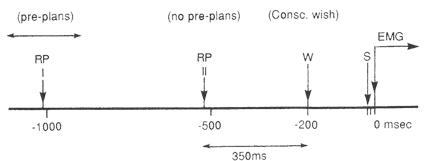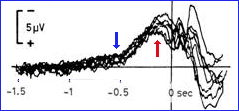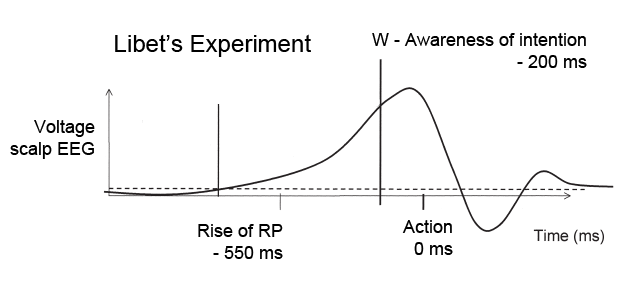|
Core Concepts
Actualism Adequate Determinism Agent-Causality Alternative Possibilities Causa Sui Causal Closure Causalism Causality Certainty Chance Chance Not Direct Cause Chaos Theory The Cogito Model Compatibilism Complexity Comprehensive Compatibilism Conceptual Analysis Contingency Control Could Do Otherwise Creativity Default Responsibility De-liberation Determination Determination Fallacy Determinism Disambiguation Double Effect Either Way Enlightenment Emergent Determinism Epistemic Freedom Ethical Fallacy Experimental Philosophy Extreme Libertarianism Event Has Many Causes Frankfurt Cases Free Choice Freedom of Action "Free Will" Free Will Axiom Free Will in Antiquity Free Will Mechanisms Free Will Requirements Free Will Theorem Future Contingency Hard Incompatibilism Idea of Freedom Illusion of Determinism Illusionism Impossibilism Incompatibilism Indeterminacy Indeterminism Infinities Laplace's Demon Libertarianism Liberty of Indifference Libet Experiments Luck Master Argument Modest Libertarianism Moral Necessity Moral Responsibility Moral Sentiments Mysteries Naturalism Necessity Noise Non-Causality Nonlocality Origination Paradigm Case Possibilism Possibilities Pre-determinism Predictability Probability Pseudo-Problem Random When?/Where? Rational Fallacy Reason Refutations Replay Responsibility Same Circumstances Scandal Science Advance Fallacy Second Thoughts Self-Determination Semicompatibilism Separability Soft Causality Special Relativity Standard Argument Supercompatibilism Superdeterminism Taxonomy Temporal Sequence Tertium Quid Torn Decision Two-Stage Models Ultimate Responsibility Uncertainty Up To Us Voluntarism What If Dennett and Kane Did Otherwise? Topics Introduction Problems Freedom Knowledge Mind Life Chance Quantum Entanglement Scandals Philosophers Mortimer Adler Rogers Albritton Alexander of Aphrodisias Samuel Alexander William Alston Anaximander G.E.M.Anscombe Anselm Louise Antony Thomas Aquinas Aristotle David Armstrong Harald Atmanspacher Robert Audi Augustine J.L.Austin A.J.Ayer Alexander Bain Mark Balaguer Jeffrey Barrett William Barrett William Belsham Henri Bergson George Berkeley Isaiah Berlin Richard J. Bernstein Bernard Berofsky Robert Bishop Max Black Susan Blackmore Susanne Bobzien Emil du Bois-Reymond Hilary Bok Laurence BonJour George Boole Émile Boutroux Daniel Boyd F.H.Bradley C.D.Broad Michael Burke Jeremy Butterfield Lawrence Cahoone C.A.Campbell Joseph Keim Campbell Rudolf Carnap Carneades Nancy Cartwright Gregg Caruso Ernst Cassirer David Chalmers Roderick Chisholm Chrysippus Cicero Tom Clark Randolph Clarke Samuel Clarke Anthony Collins August Compte Antonella Corradini Diodorus Cronus Jonathan Dancy Donald Davidson Mario De Caro Democritus William Dembski Brendan Dempsey Daniel Dennett Jacques Derrida René Descartes Richard Double Fred Dretske Curt Ducasse John Earman Laura Waddell Ekstrom Epictetus Epicurus Austin Farrer Herbert Feigl Arthur Fine John Martin Fischer Frederic Fitch Owen Flanagan Luciano Floridi Philippa Foot Alfred Fouilleé Harry Frankfurt Richard L. Franklin Bas van Fraassen Michael Frede Gottlob Frege Peter Geach Edmund Gettier Carl Ginet Alvin Goldman Gorgias Nicholas St. John Green Niels Henrik Gregersen H.Paul Grice Ian Hacking Ishtiyaque Haji Stuart Hampshire W.F.R.Hardie Sam Harris William Hasker R.M.Hare Georg W.F. Hegel Martin Heidegger Heraclitus R.E.Hobart Thomas Hobbes David Hodgson Shadsworth Hodgson Baron d'Holbach Ted Honderich Pamela Huby David Hume Ferenc Huoranszki Frank Jackson William James Lord Kames Robert Kane Immanuel Kant Tomis Kapitan Walter Kaufmann Jaegwon Kim William King Hilary Kornblith Christine Korsgaard Saul Kripke Thomas Kuhn Andrea Lavazza James Ladyman Christoph Lehner Keith Lehrer Gottfried Leibniz Jules Lequyer Leucippus Michael Levin Joseph Levine George Henry Lewes C.I.Lewis David Lewis Peter Lipton C. Lloyd Morgan John Locke Michael Lockwood Arthur O. Lovejoy E. Jonathan Lowe John R. Lucas Lucretius Alasdair MacIntyre Ruth Barcan Marcus Tim Maudlin James Martineau Nicholas Maxwell Storrs McCall Hugh McCann Colin McGinn Michael McKenna Brian McLaughlin John McTaggart Paul E. Meehl Uwe Meixner Alfred Mele Trenton Merricks John Stuart Mill Dickinson Miller G.E.Moore Ernest Nagel Thomas Nagel Otto Neurath Friedrich Nietzsche John Norton P.H.Nowell-Smith Robert Nozick William of Ockham Timothy O'Connor Parmenides David F. Pears Charles Sanders Peirce Derk Pereboom Steven Pinker U.T.Place Plato Karl Popper Porphyry Huw Price H.A.Prichard Protagoras Hilary Putnam Willard van Orman Quine Frank Ramsey Ayn Rand Michael Rea Thomas Reid Charles Renouvier Nicholas Rescher C.W.Rietdijk Richard Rorty Josiah Royce Bertrand Russell Paul Russell Gilbert Ryle Jean-Paul Sartre Kenneth Sayre T.M.Scanlon Moritz Schlick John Duns Scotus Albert Schweitzer Arthur Schopenhauer John Searle Wilfrid Sellars David Shiang Alan Sidelle Ted Sider Henry Sidgwick Walter Sinnott-Armstrong Peter Slezak J.J.C.Smart Saul Smilansky Michael Smith Baruch Spinoza L. Susan Stebbing Isabelle Stengers George F. Stout Galen Strawson Peter Strawson Eleonore Stump Francisco Suárez Richard Taylor Kevin Timpe Mark Twain Peter Unger Peter van Inwagen Manuel Vargas John Venn Kadri Vihvelin Voltaire G.H. von Wright David Foster Wallace R. Jay Wallace W.G.Ward Ted Warfield Roy Weatherford C.F. von Weizsäcker William Whewell Alfred North Whitehead David Widerker David Wiggins Bernard Williams Timothy Williamson Ludwig Wittgenstein Susan Wolf Xenophon Scientists David Albert Philip W. Anderson Michael Arbib Bobby Azarian Walter Baade Bernard Baars Jeffrey Bada Leslie Ballentine Marcello Barbieri Jacob Barandes Julian Barbour Horace Barlow Gregory Bateson Jakob Bekenstein John S. Bell Mara Beller Charles Bennett Ludwig von Bertalanffy Susan Blackmore Margaret Boden David Bohm Niels Bohr Ludwig Boltzmann John Tyler Bonner Emile Borel Max Born Satyendra Nath Bose Walther Bothe Jean Bricmont Hans Briegel Leon Brillouin Daniel Brooks Stephen Brush Henry Thomas Buckle S. H. Burbury Melvin Calvin William Calvin Donald Campbell John O. Campbell Sadi Carnot Sean B. Carroll Anthony Cashmore Eric Chaisson Gregory Chaitin Jean-Pierre Changeux Rudolf Clausius Arthur Holly Compton John Conway Simon Conway-Morris Peter Corning George Cowan Jerry Coyne John Cramer Francis Crick E. P. Culverwell Antonio Damasio Olivier Darrigol Charles Darwin Paul Davies Richard Dawkins Terrence Deacon Lüder Deecke Richard Dedekind Louis de Broglie Stanislas Dehaene Max Delbrück Abraham de Moivre David Depew Bernard d'Espagnat Paul Dirac Theodosius Dobzhansky Hans Driesch John Dupré John Eccles Arthur Stanley Eddington Gerald Edelman Paul Ehrenfest Manfred Eigen Albert Einstein George F. R. Ellis Walter Elsasser Hugh Everett, III Franz Exner Richard Feynman R. A. Fisher David Foster Joseph Fourier George Fox Philipp Frank Steven Frautschi Edward Fredkin Augustin-Jean Fresnel Karl Friston Benjamin Gal-Or Howard Gardner Lila Gatlin Michael Gazzaniga Nicholas Georgescu-Roegen GianCarlo Ghirardi J. Willard Gibbs James J. Gibson Nicolas Gisin Paul Glimcher Thomas Gold A. O. Gomes Brian Goodwin Julian Gough Joshua Greene Dirk ter Haar Jacques Hadamard Mark Hadley Ernst Haeckel Patrick Haggard J. B. S. Haldane Stuart Hameroff Augustin Hamon Sam Harris Ralph Hartley Hyman Hartman Jeff Hawkins John-Dylan Haynes Donald Hebb Martin Heisenberg Werner Heisenberg Hermann von Helmholtz Grete Hermann John Herschel Francis Heylighen Basil Hiley Art Hobson Jesper Hoffmeyer John Holland Don Howard John H. Jackson Ray Jackendoff Roman Jakobson E. T. Jaynes William Stanley Jevons Pascual Jordan Eric Kandel Ruth E. Kastner Stuart Kauffman Martin J. Klein William R. Klemm Christof Koch Simon Kochen Hans Kornhuber Stephen Kosslyn Daniel Koshland Ladislav Kovàč Leopold Kronecker Bernd-Olaf Küppers Rolf Landauer Alfred Landé Pierre-Simon Laplace Karl Lashley David Layzer Joseph LeDoux Gerald Lettvin Michael Levin Gilbert Lewis Benjamin Libet David Lindley Seth Lloyd Werner Loewenstein Hendrik Lorentz Josef Loschmidt Alfred Lotka Ernst Mach Donald MacKay Henry Margenau Lynn Margulis Owen Maroney David Marr Humberto Maturana James Clerk Maxwell John Maynard Smith Ernst Mayr John McCarthy Barbara McClintock Warren McCulloch N. David Mermin George Miller Stanley Miller Ulrich Mohrhoff Jacques Monod Vernon Mountcastle Gerd B. Müller Emmy Noether Denis Noble Donald Norman Travis Norsen Howard T. Odum Alexander Oparin Abraham Pais Howard Pattee Wolfgang Pauli Massimo Pauri Wilder Penfield Roger Penrose Massimo Pigliucci Steven Pinker Colin Pittendrigh Walter Pitts Max Planck Susan Pockett Henri Poincaré Michael Polanyi Daniel Pollen Ilya Prigogine Hans Primas Giulio Prisco Zenon Pylyshyn Henry Quastler Adolphe Quételet Pasco Rakic Nicolas Rashevsky Lord Rayleigh Frederick Reif Jürgen Renn Giacomo Rizzolati A.A. Roback Emil Roduner Juan Roederer Robert Rosen Frank Rosenblatt Jerome Rothstein David Ruelle David Rumelhart Michael Ruse Stanley Salthe Robert Sapolsky Tilman Sauer Ferdinand de Saussure Jürgen Schmidhuber Erwin Schrödinger Aaron Schurger Sebastian Seung Thomas Sebeok Franco Selleri Claude Shannon James A. Shapiro Charles Sherrington Abner Shimony Herbert Simon Dean Keith Simonton Edmund Sinnott B. F. Skinner Lee Smolin Ray Solomonoff Herbert Spencer Roger Sperry John Stachel Kenneth Stanley Henry Stapp Ian Stewart Tom Stonier Antoine Suarez Leonard Susskind Leo Szilard Max Tegmark Teilhard de Chardin Libb Thims William Thomson (Kelvin) Richard Tolman Giulio Tononi Peter Tse Alan Turing Robert Ulanowicz C. S. Unnikrishnan Nico van Kampen Francisco Varela Vlatko Vedral Vladimir Vernadsky Clément Vidal Mikhail Volkenstein Heinz von Foerster Richard von Mises John von Neumann Jakob von Uexküll C. H. Waddington Sara Imari Walker James D. Watson John B. Watson Daniel Wegner Steven Weinberg August Weismann Paul A. Weiss Herman Weyl John Wheeler Jeffrey Wicken Wilhelm Wien Norbert Wiener Eugene Wigner E. O. Wiley E. O. Wilson Günther Witzany Carl Woese Stephen Wolfram H. Dieter Zeh Semir Zeki Ernst Zermelo Wojciech Zurek Konrad Zuse Fritz Zwicky Presentations ABCD Harvard (ppt) Biosemiotics Free Will Mental Causation James Symposium CCS25 Talk Evo Devo September 12 Evo Devo October 2 Evo Devo Goodness Evo Devo Davies Nov12 |
The Neuroscience of Free Will
Molecular biologists have assured neuroscientists for years that the molecular structures involved in neurons are too large to be affected significantly by quantum phenomena.
They know that while most biological structures are remarkably stable, and thus apparently determined, quantum effects drive the mutations that provide variation in the gene pool. So our question is how the typical structures of the brain have evolved to deal with microscopic, atomic level, noise. Can they ignore it because they are adequately determined large objects, or might they have remained sensitive to the noise?
We can expect that if quantum noise, or even ordinary thermal noise, offered beneficial advantages, there would have been evolutionary pressure to take advantage of noise.
Proof that our sensory organs have evolved until they are working at or near quantum limits is evidenced by the eye's ability to detect a single photon (a quantum of light energy), and the nose's ability to smell a single molecule.
Biology provides many examples of ergodic creative processes following a trial and error model. They harness chance as a possibility generator, followed by an adequately determined selection mechanism with implicit information-value criteria. Whether such randomness plays a role in the mind has been challenged. For decades, neuroscientists have looked to the experiments of Benjamin Libet to prove that the brain contains a deterministic mechanism that makes a decision long before the human being is conscious of the decision.
Libet Experiments
The neurologist Benjamin Libet performed a sequence of remarkable experiments in the early 1980's that were enthusiastically, if mistakenly, adopted by determinists and compatibilists to show that human free will does not exist.
His measurements of the time before a subject is aware of self-initiated actions have had a enormous, mostly negative, impact on the case for human free will, despite Libet's view that his work does nothing to deny human freedom.
Since free will is best understood as a complex idea combining two antagonistic concepts - freedom and determination, "free" and "will," in a temporal sequence, Libet's work on the timing of events can also be interpreted as supporting our "two-stage model" of free will.
Indeed, Libet himself argued that there was still room for a veto over a decision that may have been made unconsciously over 300 milliseconds before the agent is consciously aware of the decision to flex a finger, but before the action of muscles flexing. In his 2004 book, Mind Time: The Temporal Factor in Consciousness, he presented a diagram of his work.

Libet says the diagram shows room for a "conscious veto." The finding that the volitional process is initiated unconsciously leads to the question: Is there then any role for conscious will in the performance of a voluntary act (Libet, 1985)? The conscious will (W) does appear 150 msec before the motor act, even though it follows the onset of the cerebral action (1W) by at least 400 msec. That allows it, potentially, to affect or control the final outcome of the volitional process. An interval msec before a muscle is activated is the time for the primary motor cortex to activate the spinal motor nerve cells, and through them, the muscles. During this final 50 msec, the act goes to completion with no possibility of its being stopped by the rest of the cerebral cortex.) The conscious will could decide to allow the volitional process to go to completion, resulting in the motor act itself. Or, the conscious will could block or "veto" the process, so that no motor act occurs. 
 Libet's results were eagerly adopted by the deniers of free will to indicate that the mind had been made up unconsciously, long before any awareness of "conscious will."
Psychologist Daniel Wegner thinks that conscious will may be just an epiphenomenon, something that is caused by brain events, not the cause of such events. As he put it in his 2002 book The Illusion of Conscious Will,
Libet's results were eagerly adopted by the deniers of free will to indicate that the mind had been made up unconsciously, long before any awareness of "conscious will."
Psychologist Daniel Wegner thinks that conscious will may be just an epiphenomenon, something that is caused by brain events, not the cause of such events. As he put it in his 2002 book The Illusion of Conscious Will,
We don't know what specific unconscious mental processes the RP might represent....The position of conscious will in the time line suggests perhaps that the experience of will is a link in a causal chain leading to action, but in fact it might not even be that. It might just be a loose end — one of those things, like the action, that is caused by prior brain and mental events. Does the compass steer the ship? In some sense, you could say that it does, because the pilot makes reference to the compass in determining whether adjustments should be made to the ship's course. If it looks as though the ship is headed west into the rocky shore, a calamity can be avoided with a turn north into the harbor. But, of course, the compass does not steer the ship in any physical sense. The needle is just gliding around in the compass housing, doing no actual steering at all. It is thus tempting to relegate the little magnetic pointer to the class of epiphenomena — things that don't really matter in determining where the ship will go. Conscious will is the mind's compass. As we have seen, the experience of consciously willing action occurs as the result of an interpretive system, a course-sensing mechanism that examines the relations between our thoughts and actions and responds with "I willed this" when the two correspond appropriately. This experience thus serves as a kind of compass, alerting the conscious mind when actions occur that are likely to be the result of one's own agency. The experience of will is therefore an indicator, one of those gauges on the control panel to which we refer as we steer. Like a compass reading, the feeling of doing tells us something about the operation of the ship. But also like a compass reading, this information must be understood as a conscious experience, a candidate for the dreaded "epiphenomenon" label.Bernard Baars says there are two important time scales of consciousness Sensory events occurring within a tenth of a second merge into a single conscious sensory experience, suggesting a 100-millisecond scale. But working memory, the domain in which we talk to ourselves or use our visual imagination, stretches out over roughly 10-second steps. The tenth-of-a-second level is automatic, while the 10-second level is shaped by conscious plans and goals.The kinds of deliberative and evaluative processes that are important for free will involve longer time periods than those studied by Benjamin Libet. Note also that the abrupt and rapid decisions to flex a finger measured by Libet bear little resemblance to the kinds of two-stage deliberate decisions for which we can first freely generate alternative possibilities for action, then evaluate which is the best of these possibilities in the light of our reasons, motives, and desires - first "free," then "will." 

For Teachers
For Scholars
|